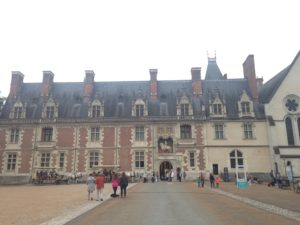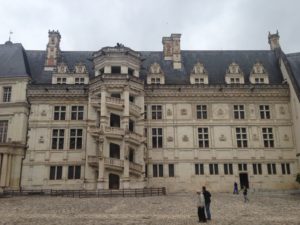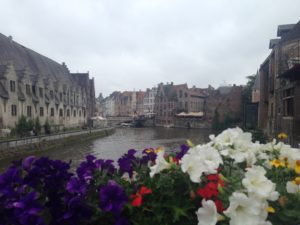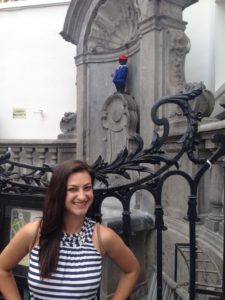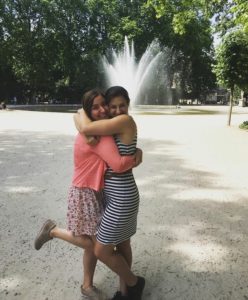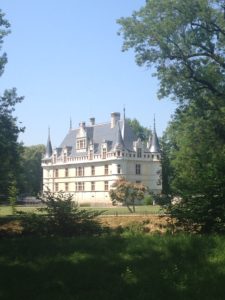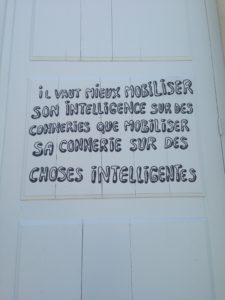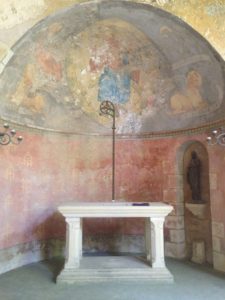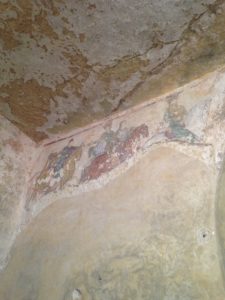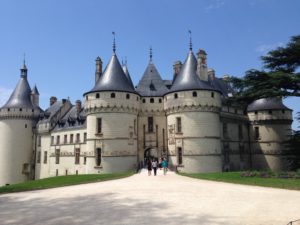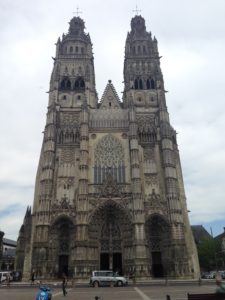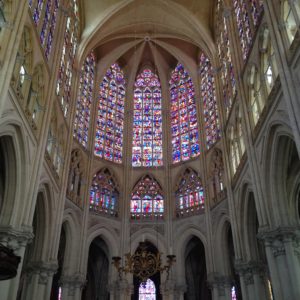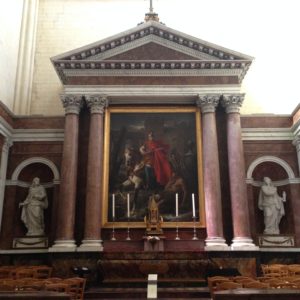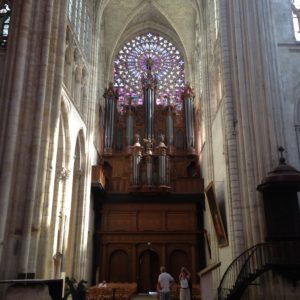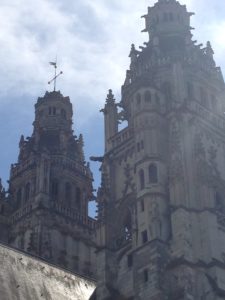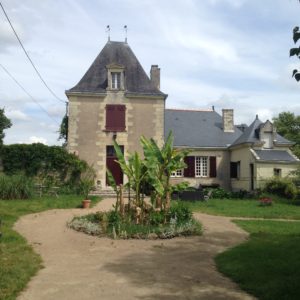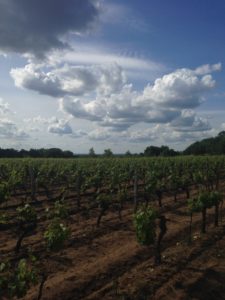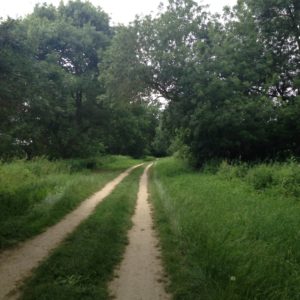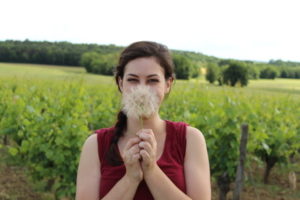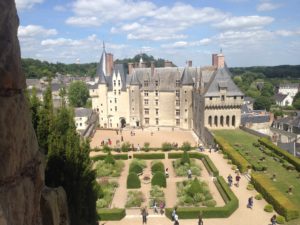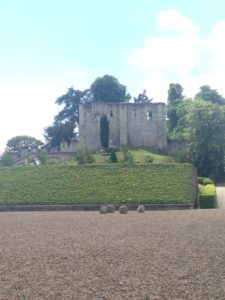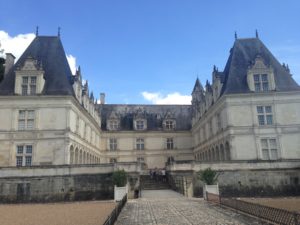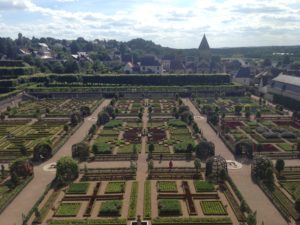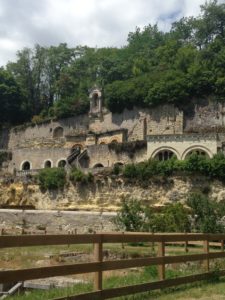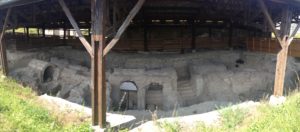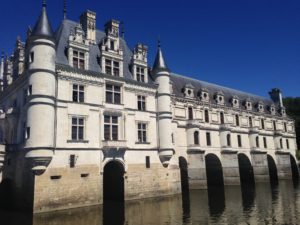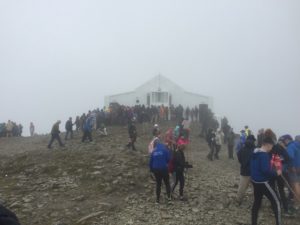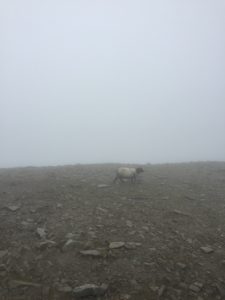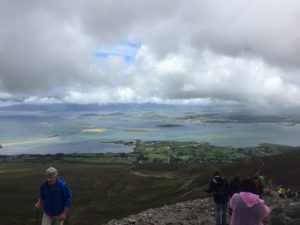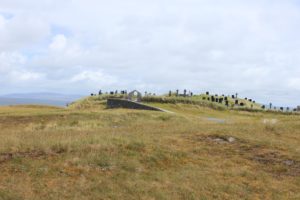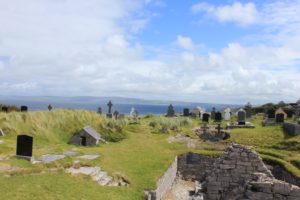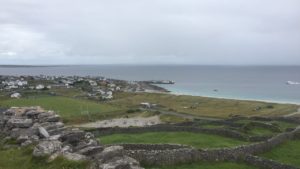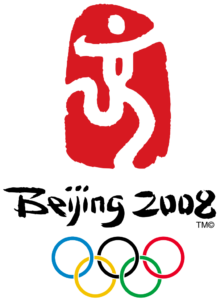May 28th – June 3rd
My first two days here felt like they lasted forever, but the rest of the week absolutely flew by. I had an awful time getting here: it involved a three-hour bus ride, a nine-hour flight, another hourlong bus ride, a two-hour train ride, and very little sleep. On top of all that, my suitcase handle broke at the baggage claim in Paris. A friend of my host parents came to pick me up at the train station in Tours and found me dripping sweat (I arrived in the middle of a heat wave) and trying unsuccessfully to carry a 50-pound suitcase along with my duffel bag. And for the next 48 hours after that, it was meeting my host parents, and getting settled in, and unpacking, and orientation at the Institute (the language school I’ll be at for the next six weeks), and then my first classes at the Institute, and a lot of napping. But aside from (and even amidst) all the chaos of the first couple of days, I’ve been having a great time.
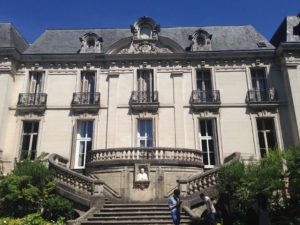
Here’s L’Institut de Touraine, or as we all call it, the Institute. We all hang out in and enter the building from the courtyard behind the building, and there are two other buildings as well, but this facade is the prettiest.
In a lot of ways, Tours isn’t much different from my home town of South Bend. But in a lot of ways, it is.
For one thing, the people here all speak French.
For another thing, everything here is much smaller than I’m used to. Streets are just about exactly one lane wide. Sidewalks range from a foot to a foot and a half wide, which is about 30% as much sidewalk as I’m used to. The bathtub in my host family’s house is just big enough for me to kneel in. And don’t even get me started on the elevators. I don’t love elevators as a rule, since I’m a bit of a claustrophobe at the best of times. But I refuse to have anything at all to do with French elevators. I literally thought the first one I ran across was a mail chute. It had space for two people, maybe, if they were reasonably small people, and if they were comfortable being very close to each other. I took the stairs.
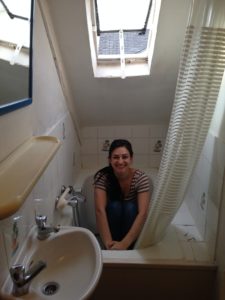
Here’s a photo of the bathtub, with me in it for scale.
Another inconvenient difference: air conditioning is the exception here rather than the rule. My classroom at the Institute has it, which is lucky, because not all the classrooms there do. But my host family’s house does not. Unfortunately, as I mentioned, France was suffering a heat wave earlier this week, so I spent a lot of time lying in front of the fan my host mother kindly installed in my room, trying not to melt.
Not all the differences are inconvenient, though. In fact, I like some of them a lot. For example, although here we don’t eat dinner until 8:00 or 8:30, the standard dinner is four courses: appetizer, main dish, cheese, and dessert. (Side note: the French word for appetizer is entrée.) I’ve met people who can’t stand the long, multiple-course meals that are standard-issue in France, but I love the opportunity to sit down, relax, talk, and eat for an hour-plus at a stretch. Also, I immediately felt at home in this culture that not only considers cheese its own food group, but also sees it as a necessary part of every dinner.
I’ve really lucked out with my host parents. They’re absolutely lovely people, and they’ve been hosting students for years, so they’re very well-equipped to help us acclimate.
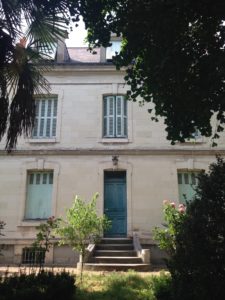
Here’s my host parents’ house. I live on the third floor. You can kind of see the two dormers poking out from the roof; that bathtub is right behind the one on the right.
It’s actually surprised me how quickly I’ve been able to settle in. (Probably because using a slightly smaller bathtub isn’t exactly earthshaking culture shock.) Even after just a week, though, I’ve fallen pretty easily into a routine. Every morning my host mother makes breakfast for me and the other host student living here (actually another Notre Dame student; his name is Thomas and you can read his blog too). Then we walk to the Institute; it’s a ten-to-fifteen-minute walk from our house. We have class from 9:00 to 12:20 every morning. Wednesdays and Fridays I have no afternoon classes; since I’m in the intensive program, I come back at 1:30 on Mondays, Tuesdays, and Thursdays for another couple hours of class. Then I have time to do whatever I want. I spent a couple evenings this week exploring the city (by which I mean I got hopelessly lost with a dead phone, but that was just on Monday). One evening I went to a play with my host mother. I did not understand a single word of it, but it was a pretty visual play so that was okay. At one point one of the (male) actors stripped fully nude, right onstage, facing the audience. This wasn’t some kind of X-rated play, either. It was at the community theatre. There were middle schoolers there. So maybe there’s something to these French stereotypes.
On the topic of not being able to understand that play: one thing I’ve rediscovered here is that my spoken French is abysmal. I already kind of knew this, but being forced to communicate always and only in French has made it unavoidably clear. I am much, much better at reading and writing French than conversing in it, but unfortunately, in France as in America, speaking is the standard mode of communication. Although I’m in the upper intermediate level here (there are six levels, ranging from complete beginner to completely fluent; I’m in the fourth) I still have to plan out what I want to say in my head before I say it. And I can have a lot of difficulty understanding people who speak French to me, too. My host parents and the teachers at the Institute are used to dealing with students of the language, so they usually speak slowly and clearly enough for me to understand, but I’ve had to ask shopkeepers to repeat themselves multiple times. And that stereotype of French people judging you for not being able to speak their language? It totally feels true.
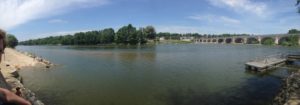
This is the Loire riverside, about a 15-minute walk from my house.


